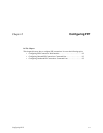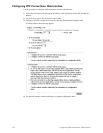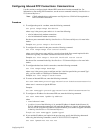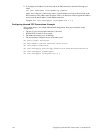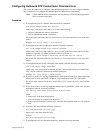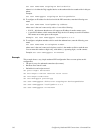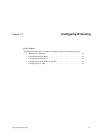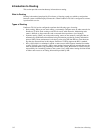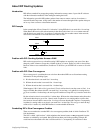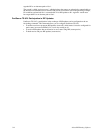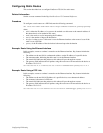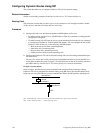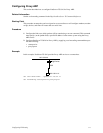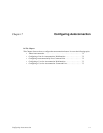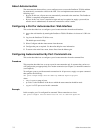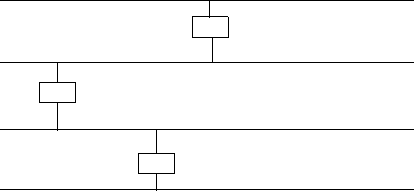
Configuring IP Routing
9-3
About RIP Routing Updates
Introduction
RIP defines a method for propagating routing information among routers. It provides IP software
with the information needed to make intelligent routing decisions.
The information, passed in RIP updates packets from router-to-router, consists of two items, a
network ID and a hop count. A hop count is the number of routers through which a packet must pass
on its way from a source to a destination network.
RIP Example
In the example that follows, Router R1 “advertises” (using RIP) that it can reach Net 1 in one hop.
When Router R2 receives this advertisement, it then knows that since it is on a common network
with R1 that it can reach Net 1 in two hops. It advertises this fact to other routers in the network,
who use this information to calculate their own routes to Net 1.
Problem with RIP: Sending Updates Across a WAN
RIP can be an expensive way to handle routing if RIP updates are regularly sent across lines that
charge by traffic volume or usage time. Neither of these, of course, applies to LANs or leased lines.
Because of these cost considerations, PortServer TS 8/16 lets you turn RIP off on some or all serial
links.
Problem with RIP: Slow Convergence
Slow convergence is a problem that can arise from the method RIP uses to disseminate routing
information. In the preceding figure,
1. R1 advertises that it can reach Net 1 in one hop.
2. R2 then advertises that it can reach Net 1 in two hops
3. R3 then advertises that it can reach Net 1 in three hops.
What happens if R1’s link to Net 1 goes down? First it realizes that its one-hop route to Net 1 is no
longer available. But it hears that R2 can reach Net 1 in two hops, so it updates its routing table to
say it can reach Net 1 in three hops, the one hop to R2 and the two hops R2 says it needs to reach Net
1.
R1 then advertises that it can reach Net 1 in three hops. R2 hears the advertisement and realizes that
if R1 needs three hops to get to Net 1 then it needs to update its own routing tables to reflect that
fact, because it knows that its route to Net 1 is always one more hop than R1 requires. Consequently,
it updates its routing tables to say that it can reach Net 1 in four hops. This can go on until the hop
count to Net 1 reaches 16, which RIP defines as an unreachable destination.
Combatting RIP’s Slow Convergence Problem
There are two methods to combat RIP’s slow convergence problem, both of which PortServer TS
8/16 implements.
The first is called “split horizon,” which stipulates that learned routes are not propagated from the
interface on which they are learned. Had split horizon been used in the preceding example, R2
would not have advertised to R1 that it could reach Net 1. Consequently, R1 would never have
Net 1
R1
R2
Net 2
Net 3
R3
Net 4



